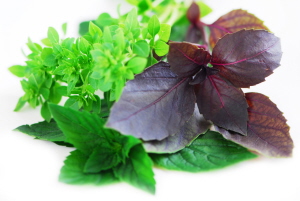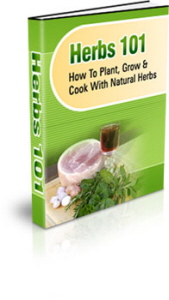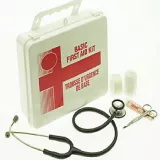|
Want to know the Secrets of Herb Gardening?
Consider the types you want to plant. Would you like annuals, biennials or perennials? 
The best way to get fresh herbs is to grow your own in either a garden bed or in a container. Here are ways to plant, handle and use fresh ones from your garden.
In any recipe calling for herbs, use fresh ones. Preparing them for your dish is easy. The more tender ones like mint, parsley, basil and cilantro can be gathered in a bowl and snipped with scissors.
The best way to have fresh herbs is to plant and grow them yourself. No longer is there a designated “herb garden”. They can be found in your flower beds, along walkways or in pots on your porch. Many ambitious gardeners are finding new ways to incorporate these into their garden beds and their containers. Many gardeners are unaware of the beauty of flowering types and never consider planting them within their flower beds. Some that have beautiful flowers are purple coneflower, catmint, bee balm, yarrow, pinks, lavender, pot marigold, borage, feverfew, and nasturtium which is particularly lovely in fresh salads. Another area to consider is to use these plants as ground cover. The ones that are suitable to this are the low growing oregano, chamomile, woolly and other creeping thyme, mint, and rosemary. Not only will it look pretty but it will be wonderfuly fragrant. Just be careful of the mint family, they tend to take over everything. One of the best ways I have grown herbs is in containers. The beauty of a container is that it is portable and can be changed at a moment’s whim. When there is no more room in your garden, start a container which you can place on your door step or patio. Another way to employ pots in your garden is to plant invasive herbs such as mint into a pot and then plant pot and all into the ground. This is an easy trick to keep those “creepers” from taking over your garden beds. Plant a container garden near your door with the cherry pie scented blue flower heliotrope and other fragrant ones such as rosemary, thyme and basil. Every time you walk by you will be greeted with there delicious scent. Some types that have grown on rocky hillsides over the centuries such as thyme, oregano and lavender are perfect for cracks in flag stone paths or walls and rock gardens. They thrive in hot dry areas with good drainage. Some believe that those grown in these conditions produce much better flavour. Now is the time to plant your herbs, whether it is in a garden bed, a cracked wall or a container. Use your imagination. Consider colour height and texture when planting. Not only will it be visually pleasing but your cooking will improve too! Happy Gardening!
Want to Know More About Herbs? Why not download this free e-book.
Click here to read the PDF in your browser, or right-click to download it.
Return from Herb Gardening to Gardening
|





 Herb growing may be for you if you're not the type of person that wants to spend their time managing an elaborate fruit or vegetable garden. While the product might not seem as significant, you'll still enjoy the constant availability of fresh, delicious plants to flavour your meals with.
Herb growing may be for you if you're not the type of person that wants to spend their time managing an elaborate fruit or vegetable garden. While the product might not seem as significant, you'll still enjoy the constant availability of fresh, delicious plants to flavour your meals with.







